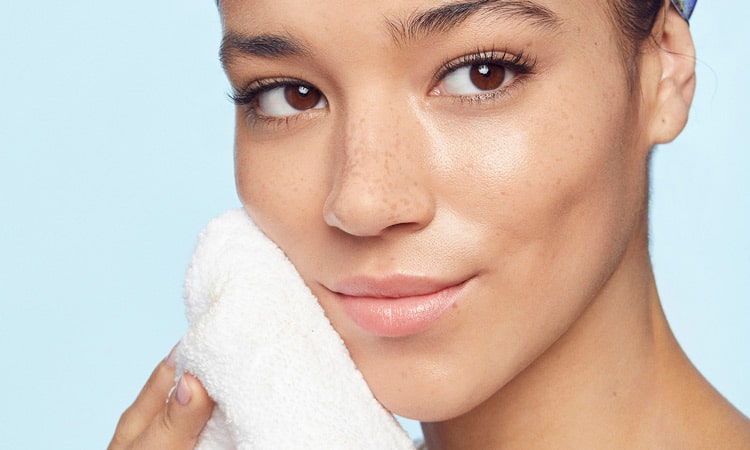Achieving clear skin may feel like an unreachable goal for many, considering the numerous factors that can impact its quality. Hormonal changes, pollution, and unhealthy eating habits can all contribute to numerous skin concerns. However, with a dedicated approach to both health and skincare, one can indeed achieve a blemish-free complexion.
In our pursuit of clear skin, we must pay attention to lifestyle changes and follow a consistent, effective skincare routine. In this article, we will discuss various aspects, such as diet, lifestyle adjustments, and skincare routines, aimed at helping you achieve and maintain clear, healthy skin.
Chapter Overview
Creating a Proper Skincare Routine
Step 1 – Washing Your Face
To maintain clear skin, we should wash our face at least once, preferably two times per day. Begin by washing your face in the morning and once in the evening to remove bacteria and impurities. If you have oily skin, opt for a non-comedogenic face wash, which prevents clogging of the pores.
Step 2 – Cleansing
Our skin can range from dry to oily, and everything in between. Selecting the appropriate cleanser for your specific skin type is the first step in our daily skincare routine. Look for a mild cleanser that matches your skin type and check the label on the bottle.
Step 3 – Moisturize
After washing and cleansing our face, it’s time to apply moisturizer. We should apply it after washing and before applying makeup. As with other skincare products, choose a moisturizer designed for your specific skin type.
For a morning moisturizer, try finding one with sunscreen for added protection from the sun.
Step 4 – Exfoliate
Exfoliating our skin is not a daily step but rather a weekly one. We should exfoliate our skin once per week to remove accumulated dead skin cells, dirt, debris, oil, bacteria, and other impurities.
Remember not to exfoliate if you have acne-prone skin, as it can worsen the condition.
The Three-Step Acne Cleaning Method
In our quest for clear skin, we have found a three-step acne cleaning method that can effectively combat acne. This regimen consists of the following steps:
- Salicylic Acid Cleanser: We begin with a salicylic acid cleanser, which dries the skin, exfoliates, and removes dead skin cells, thereby reducing blemishes and hyperpigmentation.
- Benzoyl Peroxide Spot Treatment: Next, we apply a benzoyl peroxide treatment that targets the acne-causing bacteria and inflammation while working alongside salicylic acid for a comprehensive solution.
- Daily Moisturizer: Lastly, we use a moisturizer to keep our skin hydrated, allowing it to heal and maintain a healthy balance.
By following this three-step method, we can address the root causes of acne, such as bacteria and inflammation, and move towards clearer, healthier skin.
Dos and Don’ts of Clear Skin
To maintain clear skin, we need to follow some essential practices and avoid certain harmful habits. Here are some practical tips that cover the entities mentioned:
Dos:
- Cleanse better: Using a cleansing brush helps to remove dirt, bacteria, and makeup, and exfoliates the surface of the skin.
- Use mild cleansers: If you have acne-prone skin, choose a mild cleanser specifically designed for your skin.
- Apply toner: Incorporate glycolic acid or salicylic acid toners in your morning and evening routine to unclog pores.
- Topical retinoids: Use topical retinoids before bed to unclog follicles and enhance acne treatments’ effectiveness.
- Sun protection: Apply sunscreen with appropriate SPF daily to prevent sun damage.
- Clay masks: Use a clay mask occasionally to deep clean and detoxify your skin.
- Hydration: Drink plenty of water to maintain proper hydration, promoting healthy, clear skin.
- Sleep: Prioritize quality sleep, as skin restores itself through regeneration during rest.
Don’ts:
- Picking at pimples: Resist the urge to pick, pock, or pop pimples; use a spot treatment instead.
- Skipping sunscreen: Always use sunscreen, regardless of the weather, to protect your skin.
- Unhealthy diet: Limit junk food consumption—consistently eating fast food negatively impacts skin health.
- Lack of sleep: Insufficient sleep leads to a tired complexion and dark circles, diminishing clear skin.
- Hot water: Avoid using excessively hot water when washing your face, as it can strip away essential oils.
- Irritating pillowcases: Switch to silk pillowcases to reduce friction and prevent breakouts.
- Dirty makeup brushes: Clean makeup brushes regularly to prevent bacteria growth and keep your skin clear.
- Smoking: Quit smoking, as it has detrimental effects on skin health and appearance.
- Harsh fragrances: Choose fragrance-free or mildly scented skincare products to prevent skin irritation.
Tips from Experts
Wash your face before bed
It’s crucial to wash your face before bed to remove dirt, oil, dead skin cells, and other impurities accumulated throughout the day. A mild cleanser should suffice, ensuring that your skin stays clear and refreshed.
Use oil-absorbing moisturizer
Select a daily moisturizer specifically designed to absorb excess oil and reduce shine, promoting a healthy balance for your skin. This will help keep your skin smooth without making it greasy.
Wash off the cleanser
Many people don’t rinse their cleanser thoroughly enough, leading to leftover dirt and oil on their skin. Make sure to rinse your face until it feels clean and smooth – no slippery or soapy residue should remain.
Wash with cold water
Avoid using hot water when washing your face, as it can dry out your skin. Instead, opt for cold water, which helps close your pores and maintains a smoother complexion.
Do not over wash
Overwashing can strip your skin of its natural oils, causing it to dry out. If your skin feels oily after washing, try using an astringent to remove excess oil instead of washing your face again.
Change your pillowcase
You may be wondering how changing your pillowcase contributes to clear skin. Your pillowcase accumulates dirt and sweat from your hair, hands, and skin while you sleep. Changing it at least once a week can help prevent acne breakouts and maintain a clean environment for your skin.

